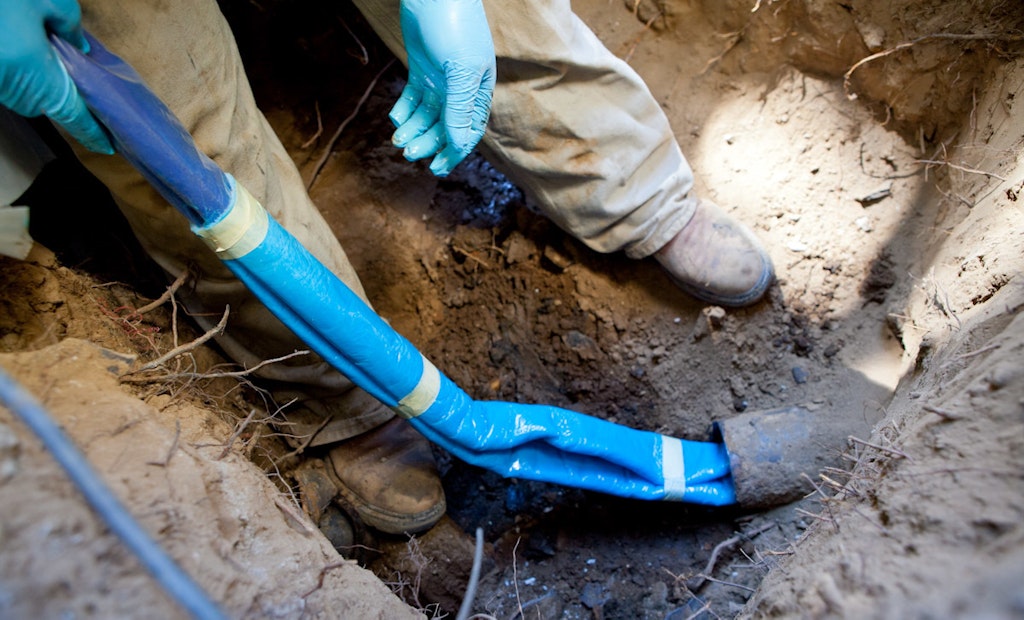Interested in Relining/Rehab?
Get Relining/Rehab articles, news and videos right in your inbox! Sign up now.
Relining/Rehab + Get Alerts“Is lining pipe worth it? I hear all the sales guys tell me I need to line pipe, but I have a backhoe and it will install new sewer pipe. Is it worth getting set up to line pipe when I have a proven method that works?”
I think you will most likely have the answer if I provide the costs of installing liner into pipe and add in opportunity costs. You can make a determination on your own without anyone telling you the answer.
Let’s start with material costs. You are currently paying about $1.25 to $ 1.50 per foot for 4-inch sewer pipe. The cost of materials for a CIPP 4-inch sewer pipe runs about $12.50 per foot, so we’re looking at material costs of 10 times the cost of new sewer pipe. If we stop there it would make no sense to go forward based on these costs. For 100 feet of pipe we have a cost of $125 for the sewer pipe and $1,250 in liner costs.
But there is more than just material costs to consider. We have labor, restoration, and time considerations that impact opportunity costs and competition.
Let’s start with the labor to install 100 feet of 4-inch sewer pipe. As far as excavating, you have the time for two workers to open the trench to get the old pipe out, which should be completed in about four to six hours. You have the time to separate the old sewer pipe out of the spoils and haul it away, along with the disposal costs. The general timeline for this for two workers should be about two eight-hour days, including disposal, backfilling the trench and clean-up. This totals 32 hours of work. If we figure a very conservative cost of $25 per hour for the excavator operator and another $15 per hour for the helper that gives you a total of $40 per hour for the two workers for the two days, totaling $1,280 in labor. Any dump fees would be added to these costs. On the other hand, CIPP lining this job should take two workers four hours each for a labor cost of $320, or $960 less than traditional excavating.
Next is restoration costs. If you are in, say, a rural southern area with shallow buried pipe and no concern for landscape or hardscape, that isn’t a big deal with the exception of call-backs for a trench that settles over time. But what if you need to cut a driveway? Cut a paved road and restore the asphalt/concrete? Permits for cutting the street? We’ve seen this cost run from a few hundred dollars to over $20,000 in impact fees and restoration. You will need to figure out that cost for each job. Lining would not incur these costs as there would be little if any restoration.
A third consideration is time and with time we’re talking about lost opportunity cost. For every hour you spend over the fastest method to complete a job, lost opportunity costs come into play. In this example, two workers using traditional excavation and taking 1 1/2 days more over the time it would take to line the pipe will lose the revenue you could have earned had they been available to work other jobs.
Let’s look at this example further. If you generate revenue of $500,000 in a year and you work a normal 40-hour work week, your company is generating $240 per hour. If you have workload ahead of you and I multiply the $240/hour by the 24 hours of time you are spending on this job that you could have spent on another job, you are losing $5,760 in gross revenue. If you run on a margin of 15%, you will have lost $864 of profit on the gross revenue you didn’t generate.
Recapping these cost comparisons, we start in a hole of $1,125 with CIPP lining materials costing more than conventional sewer piping. But on the labor side we save $960 with lining. Let’s add in a savings of $200 on restoration, though each job will have unique costs associated with this item. At this point we’re $35 better off lining than excavating.
Now looking at the lost opportunity costs using our scenario, you will have lost $5,760 tying up your labor resources for the extra day and a half. When adding the lost profit of $864 on that gross revenue total, you would have been better off financially by $899 lining rather than excavating.
The contractors who have performed this calculation have determined that lining is worth it.
About the Author
John Heisler is the owner of Pipe Lining Supply and Quik-Lining Systems. He has more than 20 years of experience in the CIPP lining industry and 40-plus years in the underground construction industry.






